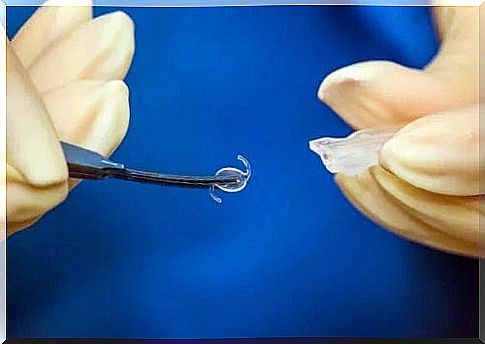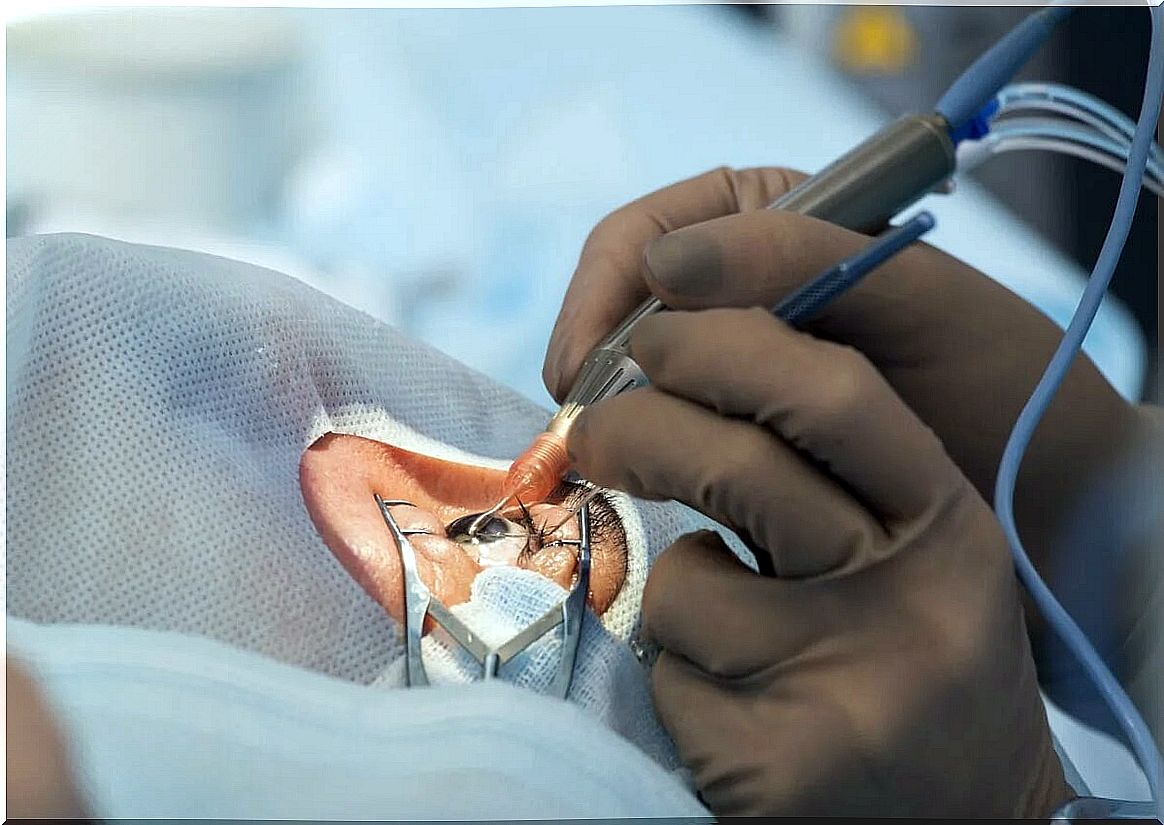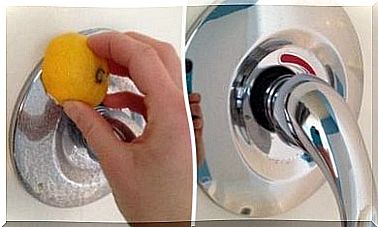Intraocular Lens Surgery: When Is It Necessary?
Most of the causes of reduced visual acuity are the impairment of one of the refractive agents. A good solution for these cases is intraocular lens surgery.

The human eye is an anatomical structure with various means of refraction, the most important of which is the lens of the eye. Many diseases can affect the ocular structures, so it is necessary to take corrective measures. One of the possible treatments is intraocular lens surgery.
The main function of the refractive means is to let rays of light hit a certain point on the retina for maximum visual acuity. If there is a problem with the cornea or lens, the light hits the wrong place, causing various visual disturbances in those affected.
Intraocular lens surgery is the medical treatment of choice for resolving refractive and cataract problems. In this procedure, a clear natural lens is placed in the eye to correct or replace the entire lens of the eye. Many advances and innovations have already been made in this medical field.
What can change the function of the crystalline lens?
The lens is the main structure designed to redirect light onto the retina. If the function of the lens is disturbed, noticeable visual disturbances and other symptoms occur.
Diseases of various kinds can affect this structure, cataracts being one of the most common. This can be defined as opacity within the lens of the eye to very different degrees.
It is an age-related condition that is more common in the elderly. Other diseases of the lens of the eye that affect its function include the following:
- Presbyopia
- Capsular cloudiness
- Pseudoexfoliation Syndrome (PEX)
On the other hand, there are diseases that do not directly affect the lens, but can change its function. These are, for example, myopia, hyperopia and astigmatism. All of these disorders change the point at which light hits the retina, which then leads to blurred vision.

You might also be interested in: Cataract prevention
When is intraocular lens surgery necessary?
Intraocular lens surgery has been a technique that has been used for many years to correct refractive problems and reduce reliance on glasses or contact lenses. Its use was only recommended for severe problems, but in recent years it has also been used to correct disorders of moderate intensity.
There are two distinctive conditions for which this treatment is used: refractory diseases and cataracts. The lens used and the procedure in general may vary depending on the condition.
Refraction problems
In general, the operation in question is recommended to anyone who has noticeable refraction problems. In addition, it is also prescribed to patients who are not candidates for laser surgery on the superficial or deep layers of the cornea.
The lenses used in patients with refraction problems are phakic intraocular lenses. This particular type is inserted into the anterior or posterior chamber without removing the lens. In this way, the device redirects the light and focuses it on the point of greatest visual acuity on the retina.
Cataract
The presence of opacities in the lens prevents light from passing through the lens, which can cause a person with cataracts to go blind. According to the National Eye Institute , using glasses helps in the early stages, but treatments are more invasive in advanced cases.
One of the most common methods used in cataract patients is intraocular lens surgery. When this happens, doctors use pseudophakic lenses to correct the problem, removing and replacing the lens. This operation is also useful for patients with presbyopia over 45 years of age.
How does an intraocular lens operation work?
The procedure is very fast and takes only about 30 minutes usually, unless there are complications. Preparation for the operation begins a week in advance when the ophthalmologist drills small laser holes between the anterior chamber and the lens to prevent increased intraocular pressure.
It is also possible to start treatment with antibiotics and anti-inflammatory drugs a few days before surgery to avoid complications. In general, intraocular lens surgery is performed in the following steps:
- The patient lies on their back and the doctor applies a local anesthetic to inhibit the sensory innervation of the eye. Sedatives can be administered to the patient.
- Next, the doctor removes germs from the eye area. The eyelids are opened with a special instrument called the eye speculum.
- To avoid injury, a lubricant should be applied to the cornea. Then a small incision is made in the eye and the intraocular lens is inserted.
- Finally , the specialist removes the corneal lubricant and closes the incision with very thin stitches.
- Once the suture is finished, he / she applies lubricating oils to the surface of the eye and closes the eye with a plaster.
Intraocular lens surgery and its benefits
The greatest benefit that patients report is the significant improvement in visual acuity after the device is inserted. In addition, the lenses are so thin that the difference is imperceptible and there is no inconvenience.
Other advantages of intraocular lens surgery are as follows:
- Can cure dire conditions that conventional lenses cannot improve.
- Enormously improves night vision.
- Eliminates addiction to glasses or contact lenses.
- Lenses can be removed if necessary.
- Recovery is quick and there is usually no dry eye feeling.

Possible risks and complications
Like all surgical interventions, intraocular lens surgery also involves risks. However, the likelihood of these risks occurring is very small.
On the other hand, one of the most serious complications is the rotation of the lens inside the eye. Fortunately, this happens very rarely. Other complications include the following:
- Corneal edema
- Post-operative infections
- Glaucoma and loss of visual acuity
- Retinal detachment
Another complication of the operation is posterior cataracts. However, the likelihood is also small and not associated with age. In studies it was found in only 46 patients out of a total of 1653 cases examined.
Intraocular Lens Surgery: A Low Risk Solution
The surgical procedure in question is the treatment of choice in some cases of severe cataracts and refraction problems. It is a minimally invasive technique that is quick and involves very few risks and complications. In addition, there are few restrictions on the patient and it can also be performed on the elderly.
One of the limitations of intraocular lens surgery is having to see a specialist every 2 years to check the condition of the lens and the underlying condition. However, compared to the benefits achieved, this does not appear to be a problem.









